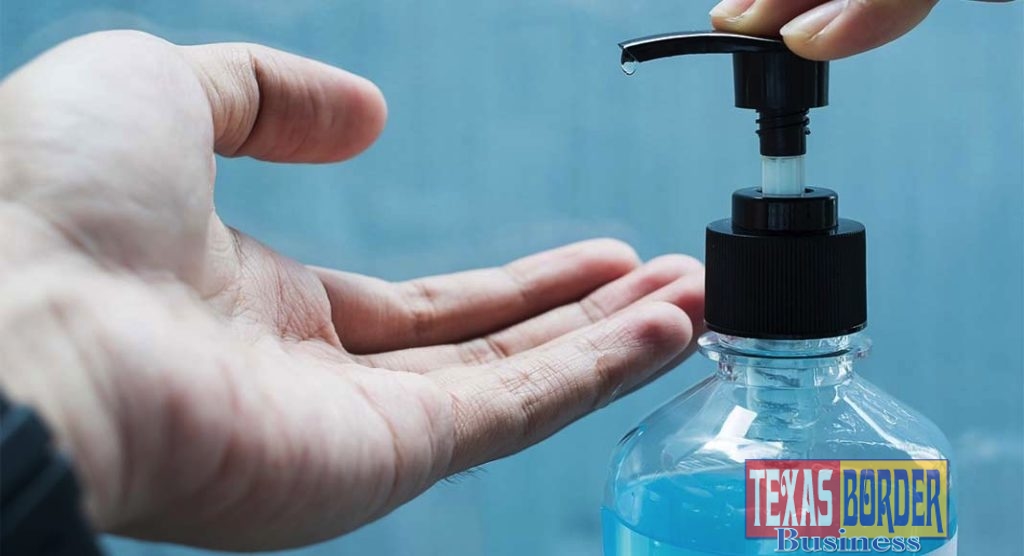
For illustration purposes only.
Texas Border Business
On March 12, the 2020 USL Championship season was suspended in light of the COVID-19 crisis and the World Health Organization’s classification of the disease as a pandemic. The Championship was not alone in this decision, joining every other major American sports league – including USL League One – in ceasing play while society grappled with how to manage the virus. Shortly thereafter, it began work on putting together a series of policies and protocols that would ultimately govern any potential return to play and help ensure the health and wellness of all involved remained its single most important priority.
The Process
Since the temporary suspension of both seasons, the USL has worked diligently to determine if, when and how the USL Championship can resume play safely. The league’s Board of Governors created its own “Hiatus Task Force” to dive deeply into these matters. Members of the Hiatus Task Forces were nominated by the teams and then selected based in part on their relationship with other leagues grappling with the same issues. Through that process, the USL was able to understand many of the best practices instilled by Major League Soccer, the National Basketball Association, Major League Baseball and the National Women’s Soccer League. To this end, the USL also actively participated in the United States Soccer Federation’s COVID-19 task force, through which it worked closely with MLS and the NWSL to share best practices specific to soccer. The USL also worked hand-in-hand with the USL Players Association, a process that ensured that the voices of the players were heard and one that allowed for valuable review and input throughout the process.
Most importantly though, the USL consulted early and often with a broad array of medical experts about the nature of the virus, when a return to play would be deemed safe and what protocols should be in place to mitigate risk. These experts include Dr. Jon McCullers, Sr. Executive Associate Dean of Clinical Affairs and Chief Operating Officer at the College of Medicine at the University of Tennessee Health Science Center; Dr. Howard Chrisman, the President of Northwestern Medical Group at the Northwestern Feinberg School of Medicine; and Dr. George Chiampas, the Chief Medical Officer of the United States Soccer Federation.
As a result of those efforts, the USL has completed work on a series of Health and Safety Protocols, which is published in its entirety below. Although no activity can ever be completely risk free, our experts agree that these protocols are reasonable and robust.
Summary of Protocols
Given the nature of the COVID-19 threat, no one approach is sufficient to mitigate the spread of the virus. While for example, regular testing of asymptomatic individuals will help, this single step is not foolproof. To this end, the USL’s Return-to-Play Protocols take a five-pronged approach to mitigate against the risk of COVID-19. These elements are:
1. Social Distancing;
2. Personal Protective Equipment and Sanitization;
3. Screening;
4. Testing; and
5. Training and Education.
Below, more detail is provided as to how each of these elements will be applied in practice.
1. Maximizing Social Distancing.
In soccer, a certain degree of contact is inevitable. With that, except where impossible or highly impracticable, social distancing measures are required under the USL Return-to-Play Protocols. To give some examples of how this process will work in practice:
· The competition will generally be regionalized so that air travel is limited.
· When traveling to another market by bus, teams are required to use multiple buses if social distancing is not able to be maintained on a single bus.
· Players and other essential staff who may come into contact with players are required to stay at home unless attending to essential functions or team activities.
· Unless they are actively playing, social distancing is generally required during training and matches, i.e., players will not huddle to hear coaching instructions and should spread to a six-foot distance if on the sidelines or in the technical area.
· Social distancing is required within the locker room and weight rooms; this may require usage to be staggered.
· No player will be asked to share a hotel room with another player unless those players are already living together.
2. Mitigation through PPE and Sanitization.
In order to help mitigate the spread of COVID-19, the USL Return to Play Protocols require that:
· Players and staff members who work with players must wear masks in any situation where they are outside of their homes and may potentially be unable to maintain social distancing, the only exception being active training or match play.
· Anyone at field level who is not playing must wear a mask.
· When traveling from market to market, masks are required throughout the journey.
· Masks are required in the locker room, weight room and training rooms, and during any team meeting.
· In limited circumstances in which players travel by plane, masks are required in the airport and throughout the journey. Players will also be provided with disinfectant and hand sanitizer to use throughout the trip.
· Any space in which team activities are to take place must be disinfected before and after use.
· All equipment must be single-use, where possible. If this is not possible, it is to be disinfected before and after use.
· Teams will follow increased cleaning protocols, as these are applicable in their particular jurisdiction.
3. Rigorous Screening.
Based on our conversations with medical experts, rigorous screening for symptoms and immediate isolation of symptomatic cases is essential to mitigating the spread of the COVID-19. To that end:
· Prior to reporting to training, treatment, or any other team activity, individuals will be surveyed as to whether they: (a) are feeling sick, (b) are experiencing COVID-19 symptoms, or (c) have had close contact with anyone who has a diagnosed or suspected case of COVID-19.
· Anyone who answers affirmatively will not report and self-quarantine until the team physician can determine whether testing or an additional quarantine period is warranted.
· Upon reporting to training, treatment, or any other team activity, individuals will have their temperatures checked.
· Anyone with a temperature of 100.4 or higher will immediately return home and self-quarantine until the team physician can determine whether testing or an additional quarantine period is warranted.
4. Comprehensive Testing Regime.
Given the risks posed by COVID-19 and based on our conversations with medical experts, the USL has determined that is advisable to exceed state and local health department requirements and recommendations and institute a comprehensive testing regiment for all players, as well as for all other club personnel who may interact with players.
· Players, and staff members who work with players, will be given a polymerase chain reaction (PCR) diagnostic test for COVID-19 every week, in addition to one “baseline” test.
· In addition, players and staff members who work with players will be given additional PCR tests if they are symptomatic or if they have been in close contact for a prolonged period with a diagnosed or suspected case of COVID-19.
· In the event of a positive PCR test:
o The individual will be immediately isolated and receive follow-up care and treatment.
o If appropriate (at the discretion of the team physician), the individual may be tested again to ensure the initial test was not a false positive.
o All areas in which the individual has been will be closed for 24 hours for cleaning and disinfection.
o The individual’s club, in consultation with the state or local health department, will conduct a contact tracing investigation.
o Anyone identified in the contact tracing investigation will immediately quarantine and be tested one or more times on a schedule to be determined by the team physician.
5. Training and Education.
The USL is highly aware that these protocols are only valuable to the extent that all participants in our ecosystem fully understand and abide by them. To this end, all players and staff who may interact with players will receive comprehensive training on the protocols. In addition, each team will designate one or more Health Officers who will be responsible for providing follow-on education within their team and implementing the protocols.
Conclusion
In the unlikely event that teams cannot comply with any of the requirements (e.g., because of venue infrastructure), they are required to contact the league as soon as possible to devise an alternative, medically acceptable plan, which is subject to League Office approval.
While unlikely, it is also possible that, in some cases, these Protocols will be less strict than the guidance, recommendations or requirements of applicable state and local health authorities. In such cases, teams and players must comply first and foremost with their local and state health authority guidance. To be clear, these protocols are intended to supplement, not replace, health authority guidance.
These Protocols remain subject to change and, as the situation evolves and we learn more about the novel coronavirus, we may update these Protocols as appropriate.
From the onset of the COVID-19 crisis, the health and wellness of players, staff and supporters has been our top priority, and for more than three months we have been working every day to make sure that our return-to-play was done safely.
We also want to be as transparent as possible with you about the steps that are being taken. As such, we have from the beginning remained committed to publishing the full list of protocols. While everything to this point serves as a summary, we believe that seeing every step taken to provide for player, staff and supporter health is in the best interest of all involved.
Below are the policies and protocols in their entirety.













